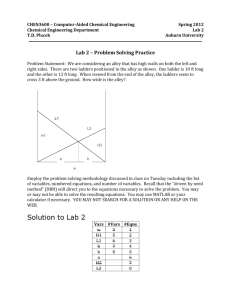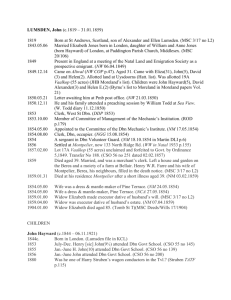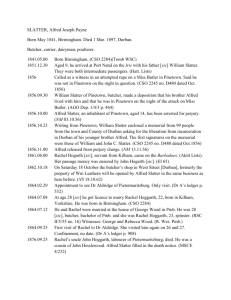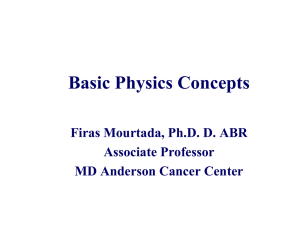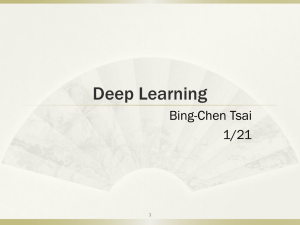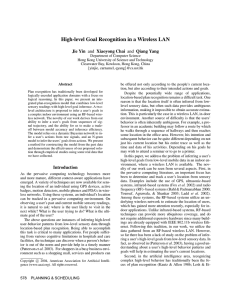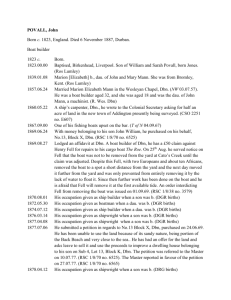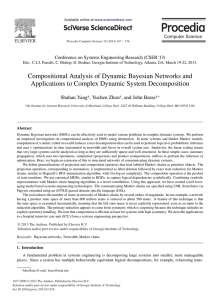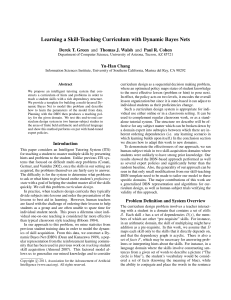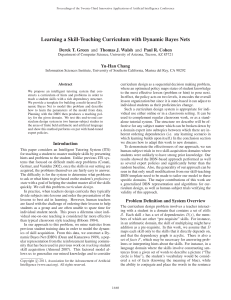CGRS Poster Template - Wichita State University
advertisement
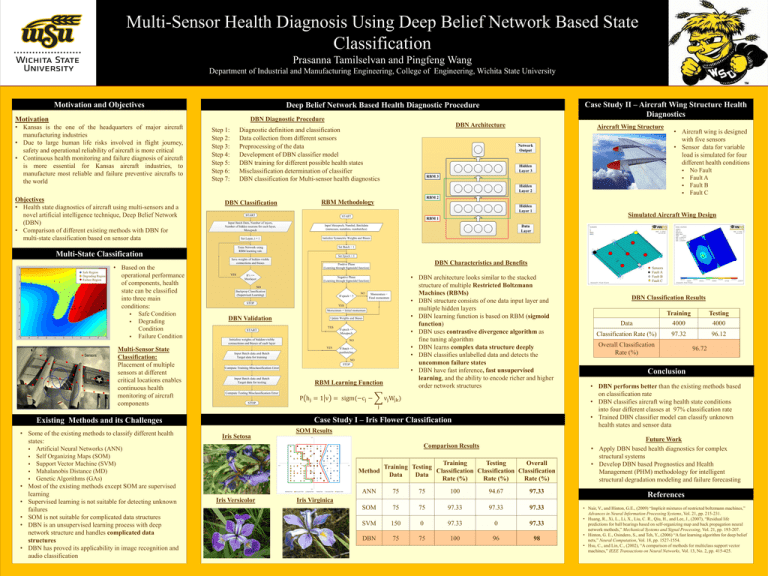
Multi-Sensor Health Diagnosis Using Deep Belief Network Based State Classification Prasanna Tamilselvan and Pingfeng Wang Department of Industrial and Manufacturing Engineering, College of Engineering, Wichita State University Motivation and Objectives Case Study II – Aircraft Wing Structure Health Diagnostics Deep Belief Network Based Health Diagnostic Procedure Motivation DBN Diagnostic Procedure • Kansas is the one of the headquarters of major aircraft manufacturing industries • Due to large human life risks involved in flight journey, safety and operational reliability of aircraft is more critical • Continuous health monitoring and failure diagnosis of aircraft is more essential for Kansas aircraft industries, to manufacture most reliable and failure preventive aircrafts to the world Objectives • Health state diagnostics of aircraft using multi-sensors and a novel artificial intelligence technique, Deep Belief Network (DBN) • Comparison of different existing methods with DBN for multi-state classification based on sensor data Step 1: Step 2: Step 3: Step 4: Step 5: Step 6: Step 7: DBN Architecture Diagnostic definition and classification Data collection from different sensors Preprocessing of the data Development of DBN classifier model DBN training for different possible health states Misclassification determination of classifier DBN classification for Multi-sensor health diagnostics DBN Classification Aircraft Wing Structure • Aircraft wing is designed with five sensors • Sensor data for variable load is simulated for four different health conditions No Fault Fault A Fault B Fault C RBM Methodology Simulated Aircraft Wing Design Multi-State Classification Safe Region Degrading Region Failure Region Sensors • Based on the operational performance of components, health state can be classified into three main conditions: Safe Condition Degrading Condition Failure Condition DBN Characteristics and Benefits DBN Validation Multi-Sensor State Classification: Placement of multiple sensors at different critical locations enables continuous health monitoring of aircraft components RBM Learning Function P hj = 1 v = sigm(−cj − POSTER TEMPLATE BY: www.PosterPresentations.com vj Wjk ) j Case Study I – Iris Flower Classification Existing Methods and its Challenges • Some of the existing methods to classify different health states: Artificial Neural Networks (ANN) Self Organizing Maps (SOM) Support Vector Machine (SVM) Mahalanobis Distance (MD) Genetic Algorithms (GAs) • Most of the existing methods except SOM are supervised learning • Supervised learning is not suitable for detecting unknown failures • SOM is not suitable for complicated data structures • DBN is an unsupervised learning process with deep network structure and handles complicated data structures • DBN has proved its applicability in image recognition and audio classification • DBN architecture looks similar to the stacked structure of multiple Restricted Boltzmann Machines (RBMs) • DBN structure consists of one data input layer and multiple hidden layers • DBN learning function is based on RBM (sigmoid function) • DBN uses contrastive divergence algorithm as fine tuning algorithm • DBN learns complex data structure deeply • DBN classifies unlabelled data and detects the uncommon failure states • DBN have fast inference, fast unsupervised learning, and the ability to encode richer and higher order network structures Iris Setosa SOM Results Comparison Results Training Testing Overall Training Testing Method Classification Classification Classification Data Data Rate (%) Rate (%) Rate (%) Iris Versicolor ANN 75 75 100 94.67 97.33 SOM 75 75 97.33 97.33 97.33 SVM 150 0 97.33 0 97.33 DBN 75 75 100 96 98 Iris Virginica Sensors Fault A Fault B Fault C DBN Classification Results Training Testing Data 4000 4000 Classification Rate (%) 97.32 96.12 Overall Classification Rate (%) 96.72 Conclusion • DBN performs better than the existing methods based on classification rate • DBN classifies aircraft wing health state conditions into four different classes at 97% classification rate • Trained DBN classifier model can classify unknown health states and sensor data Future Work • Apply DBN based health diagnostics for complex structural systems • Develop DBN based Prognostics and Health Management (PHM) methodology for intelligent structural degradation modeling and failure forecasting References • Nair, V., and Hinton, G.E., (2009) “Implicit mixtures of restricted boltzmann machines,” Advances in Neural Information Processing Systems, Vol. 21, pp. 215-231. • Huang, R., Xi, L., Li, X., Liu, C. R., Qiu, H., and Lee, J., (2007), “Residual life predictions for ball bearings based on self-organizing map and back propagation neural network methods,” Mechanical Systems and Signal Processing, Vol. 21, pp. 193-207. • Hinton, G. E., Osindero, S., and Teh, Y., (2006) “A fast learning algorithm for deep belief nets,” Neural Computation, Vol. 18, pp. 1527-1554. • Hsu, C., and Lin, C., (2002), “A comparison of methods for multiclass support vector machines,” IEEE Transactions on Neural Networks, Vol. 13, No. 2, pp. 415-425.
